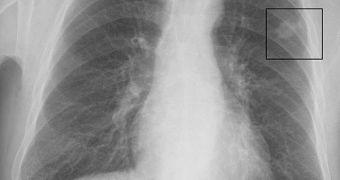At this point, chemotherapy is one of the therapies for cancer that are used around the word. Millions of people are subjected to the drugs, which indeed have some efficiency in destroying tumor cells. Unfortunately, they also attack and easily destroy healthy cells, which means that the therapy has some very nasty side-effects. Now, researchers at the Purdue University announce the development of a significant improvement that could see many people benefiting from the positive effects of chemo, without experiencing the negative consequences.
The group is made up of PU Department of Agricultural and Biological Engineering Professor Joseph Irudayaraj and graduate student Jiji Chen. They say that they managed to create a new type of probes at the nanoscale, which proved to be extremely efficient in targeting the specific tumor sites, with only a minimal impact on the surrounding cells. The nanoprobes the team used were shaped like rods, and they were coated with the breast-cancer drug Herceptin.
“We have demonstrated the ability to track these nanoparticles in different cellular compartments of live cells and show where they collect quantitatively. Our methods will allow us to calculate the quantities of a drug needed to treat a cancer cell because now we know how these nanoparticles are being distributed to different parts of the cell,” Irudayaraj explains. He is also the author of a new study detailing the finds, which appears in the early online issue of the respected scientific journal ACS Nano. The tiny rods are roughly 1,000 times smaller than the width of a human hair.
The nanoprobes could also have the positive side-effect of needing less drugs on them to do the same job chemotherapy does today. The advantage to that is the fact that less available drugs will mean a lower rate of absorption from healthy cells around the tumor. “Each nanoparticle acts like a deliverer of a mail package, or dose, of the drug directly to the appropriate location,” Irudayaraj adds. The team's work was funded through a Trask Grant and the Purdue Research Foundation.

 14 DAY TRIAL //
14 DAY TRIAL //